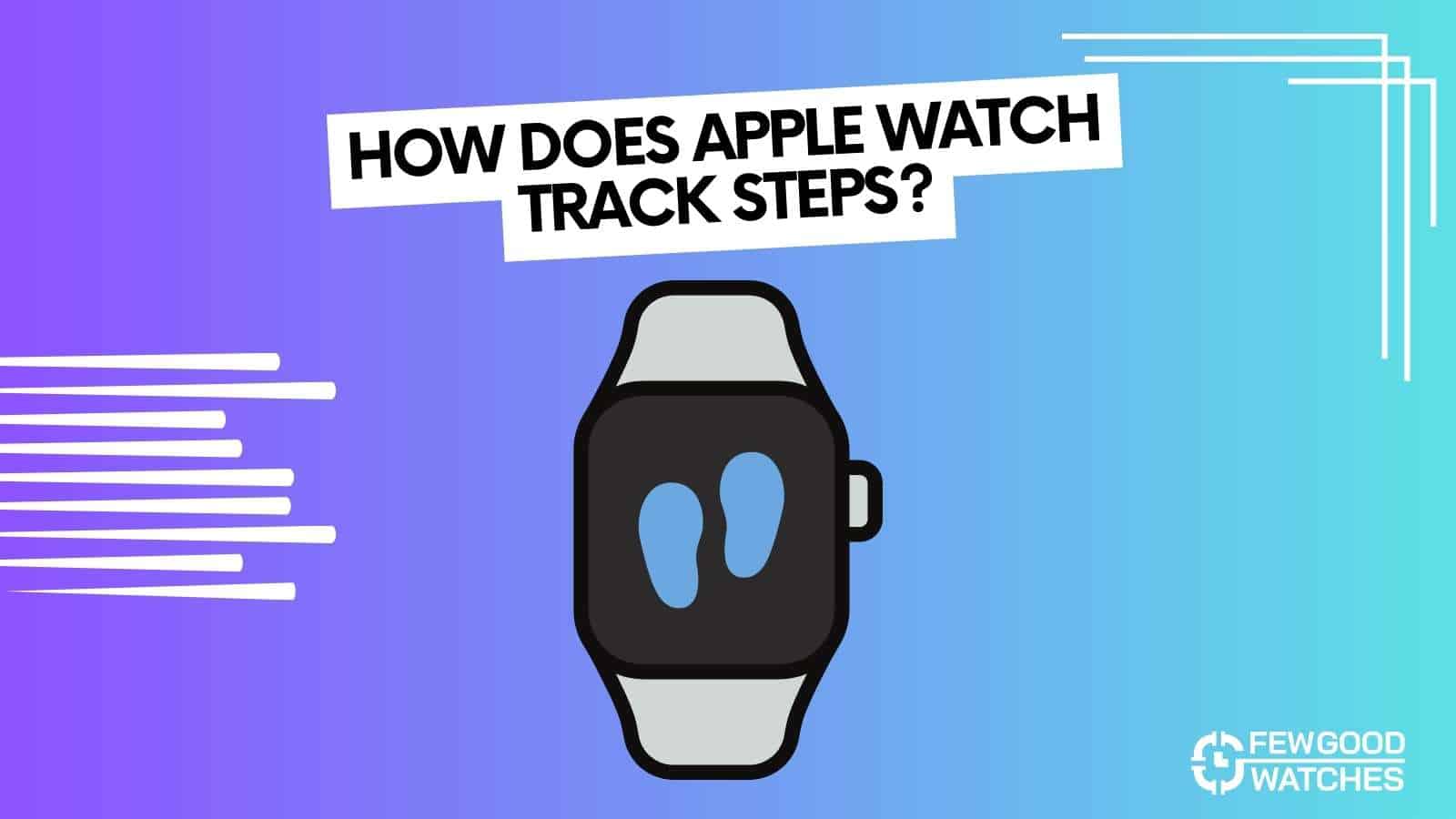Want to know how does apple watch tracks your steps so accurately? Opening the Health application only to see your Apple Watch relay the exact amount of steps you’ve walked the entire day can feel a bit magical at first. Having the ability to know how many steps you’ve walked and what particular pace allows you to judge your daily routine and whether you are getting enough steps every day.
With that said, though, the entire process is far from magic.
Instead, it uses a complex array of sensors and predictive models to ensure that the step counting is both accurate and instantaneous. Read on to learn how your Apple Watch tracks your steps.
How Does The Apple Watch Track My Steps?

As mentioned earlier, the Apple Watch uses a complex array of sensors to track your steps. On the most basic level, the Watch takes advantage of a three-axis accelerometer. As the name implies, an accelerometer is able to map information on a three-dimensional level.
With the data that is sent through it, the Watch is able to accurately estimate whether you are standing still, walking slow, or running. Since a change in a particular axis indicates your overall movement, the Watch can be quite accurate.
Increasing Accuracy
However, this basic model is not all that the Apple Watch does. Remember the plethora of information you entered when you first set up the Health app? Well, Apple puts it to good use. Having a large array of vital information about your weight, height allows it to go even a step beyond and provide even more accurate information.
For example, by calculating your average walking pace, the Watch is able to accurately determine when you are running, if you are jogging, and provide you with the number of calories you’ve burnt governed with your weight and heart rate amongst various other factors.
Besides that though, the Watch has its own GPS module built in. Therefore, when you start a workout or are just walking, it is also able to determine the exact starting point of where you started walking and where you ended up stopping.
With that information, it is able to plot your movements on a map while also using the information from the GPS system to also accurately determine your pace throughout your journey
The Science Behind Step Counters
With technical jargon that might just feel a bit daunting at first, we’ve tried to ease down the entire process of how an Apple Watch calculates your steps. Here’s how it works:
- As soon as you turn on your Apple Watch, the sensors inside calibrate themselves and have an initial reading
- Once you take a single step, the sensors calculate the relative distance behind the initial point and the next point
- After doing so, they subtract the difference traveled between the two points and are able to derive the total distance you traveled in a single stride
- When taking a series of steps, they are also able to calculate the amount of time it takes for you to cover a certain distance
- After thousands of steps, your average walking pace is also recorded. After doing so, the Apple Watch is then also able to determine whether your walking, jogging, or running.
In essence, the entire process relies on extremely basic algorithms. What makes it extremely accurate is the amount of information that is being provided by you as you walk with your Apple Watch strapped on every day. As you use the Watch further, the readings are expected to only increase in accuracy!
How Does Apple Watch Track The Number Of Flights I Have Climbed?
While the process might seem complex at first, it actually is fairly simple. The plethora of sensors present on the Apple Watch allows your Watch to understand whether you are walking on a flat plane or whether your elevation is increasing.
Once it identifies that your elevation is slightly increasing with each stride, it is then able to use the algorithm we mentioned earlier to derive an accurate assessment of each stride. After doing so, it just tallies the number of strides that have led to the overall elevation increasing.
That, in turn, translates to the number of stairs you’ve climbed.
Find Out: How Does Apple Health Know My Weight
How Accurate Is The Apple Watch In Tracking My Steps?
Gone are the days when you’d be able to flail your hands and imitate the motion of walking with your arms to trick your fitness tracker. Now, the Apple Watch uses a combination of location-based data from GPS and local sensors to derive an accurate estimate.
While the readings can sway around due to a variety of factors which can range from the amount of time the Apple Watch has had to get used to your walking patterns, the strength of the GPS signal, and so on, the Watch, when compared to a medical-grade instrument has an inaccuracy of about 0.4%.
So, if you walked about 10,000 steps on a single day (Whoa!) you’ll only be left with an inaccuracy of about 4 steps. So, you can accurately rely on an Apple Watch when it comes to tracking your steps no matter what the situation.
Technology is wonderful, eh?
Conclusion
The Apple Watch’s ability to track your steps may seem magical at first, but it’s actually a complex process utilizing sensors and predictive models. By incorporating a three-axis accelerometer, the Watch accurately estimates your movements, distinguishing between standing, walking, and running. Moreover, the Watch takes advantage of the information you provide during setup, such as weight and height, to enhance accuracy.
It calculates your average walking pace, identifies running or jogging, and even estimates the number of calories burned based on various factors. With its built-in GPS module, the Watch can determine your starting and stopping points, plot your movements on a map, and accurately track your pace throughout your journey.
The step-counting process relies on basic algorithms, with increased accuracy over time as the Watch adapts to your patterns. Additionally, the Apple Watch can track the number of flights climbed by analyzing changes in elevation. While there may be slight variations in readings due to factors like GPS signal strength, the Watch maintains an impressive accuracy of approximately 0.4%. With the Apple Watch as your companion, you can confidently rely on its step tracking capabilities to enhance your fitness journey.
I bought my first smartwatch in 2018 and have been wearing one ever since. It might get frustrating at times to receive 100 notifications a day. That's why we need to know how to make the best of them and how to use them to improve our daily lives, not the other way around. I write about the newest smartwatches, I create top picks, and I write helpful guides and simply explain complicated things.

